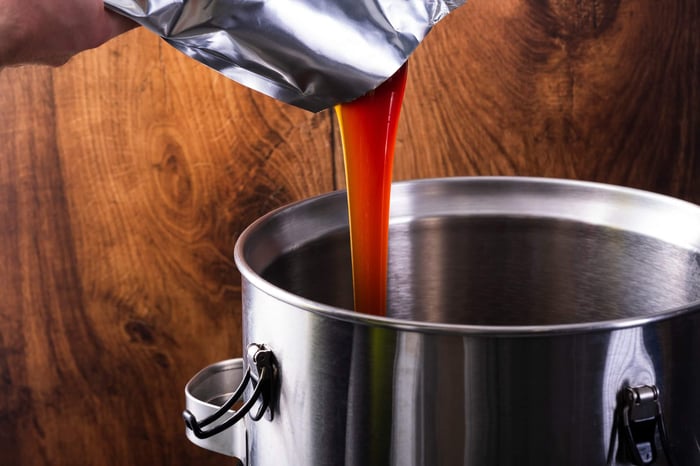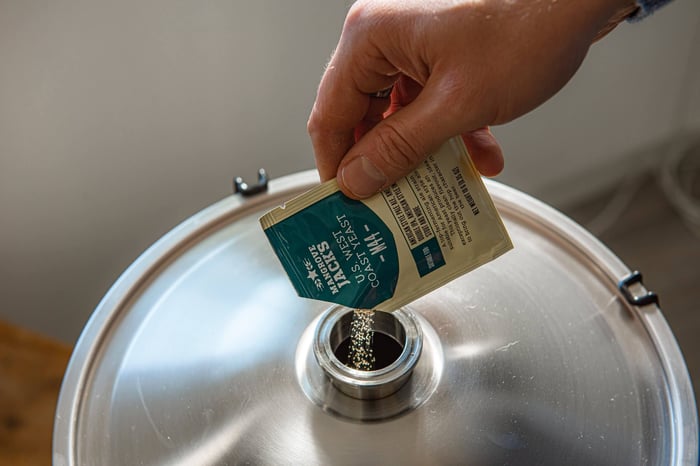Common brewing myth: Malt extract is only for beginners.
Reality check: Top-tier brewers rely on extract techniques more than most homebrewers realise.
We've spent years perfecting our brewing methods, and here's something we've discovered: the smartest all-grain brewers keep malt extract in their brewing arsenal. Not as a backup plan, but as a strategic tool that solves real brewing challenges.
Breaking Down Malt Extract Basics
Malt extract delivers concentrated brewing sugars extracted from quality malted barley. Simple definition, but the applications are anything but basic.
Two main types serve different brewing needs:
- Liquid Malt Extract (LME): Think golden syrup consistency
- Dried Malt Extract (DME): Fine, powdery texture
The grain varieties used during production determine flavour characteristics and brewing properties.
Handy conversion: 1kg dextrose ≈ 1.1kg DME ≈ 1.2kg LME
Behind the Scenes: Extract Production
Extract production follows traditional brewing's opening moves. Quality malted grains undergo standard mashing to create wort. Controlled evaporation then concentrates the sugars by removing excess water.
Modern facilities use vacuum systems for water removal at reduced temperatures. This preserves delicate flavour compounds that contribute to finished beer quality.
Competition insight: Extract-based beers consistently perform well at national and international competitions, often outperforming all-grain entries. The lesson? Technique trumps method every time.
Strategic Extract Applications for All-Grain Brewers
Building Championship Yeast Starters
Healthy fermentation starts with adequate yeast populations. Professional brewers understand this principle intimately – it's what separates trophy-worthy beer from the also-rans.
Extract transforms starter preparation from complex to straightforward:
Streamlined process:
- Bring required water to rolling boil
- Add malt extract while stirring
- Maintain boil for 10 minutes minimum
- Cool to target pitching temperature
- Transfer to sanitised flask and pitch yeast
Target range: Specific gravity 1.030-1.040 provides optimal conditions for yeast reproduction without cellular stress.
Critical success factor: Maintain absolute sanitation standards. Contamination at this stage carries through to your final beer.
Gravity Troubleshooting Mid-Session
Even experienced brewers encounter extraction efficiency variations. Environmental factors, equipment differences, or process modifications can affect your numbers.
Real-world example: You're targeting 1.053 pre-boil gravity but measure 1.046 after sparging. That's a 7 gravity unit shortfall requiring correction.
High-Alcohol Beer Development
Creating elevated-strength beers typically demands extended boil times or maximum grain capacity. When equipment limitations or time constraints restrict these approaches, extract offers an elegant workaround.
Calculated extract additions during the boil increase final gravity without extending brewing schedules or stressing equipment beyond design limits.
Time-Efficient Brewing Sessions
All-grain brewing delivers exceptional results, but sometimes you want fresh beer without the full commitment. Extract brewing maintains production flow between major brewing sessions.
Combine extract with carefully selected specialty grains for flavour complexity without time investment. Perfect for maintaining brewing rhythm during busy periods.
Contingency Strategy
Smart brewers prepare for unexpected challenges. Equipment failures, timing issues, or ingredient shortages can disrupt even well-planned brewing sessions. Extract provides reliable backup options.
Maximising Storage Life
Dried Malt Extract Storage:
- Keep moisture and oxygen exposure minimal
- Maintain storage temperature 10-21°C
- Expect 12-month shelf life under proper conditions
Liquid Malt Extract Handling:
- Unopened pouches remain viable for 24 months
- Transfer opened portions to minimal-headspace containers
- Refrigerate and consume within 3 months
- Reduce oxygen exposure to prevent quality degradation
Taking Your Brewing Further
Malt extract represents a sophisticated brewing tool, not just beginner convenience. Whether developing robust yeast cultures, correcting gravity calculations, or producing high-strength beers, extract delivers consistent professional results.
Ready to expand your brewing knowledge? Explore our Brewing 101 series designed for serious homebrewers.
Questions about advanced extract techniques? Contact our team – we're always keen to discuss brewing innovations and problem-solving approaches.
Grainfather Team










